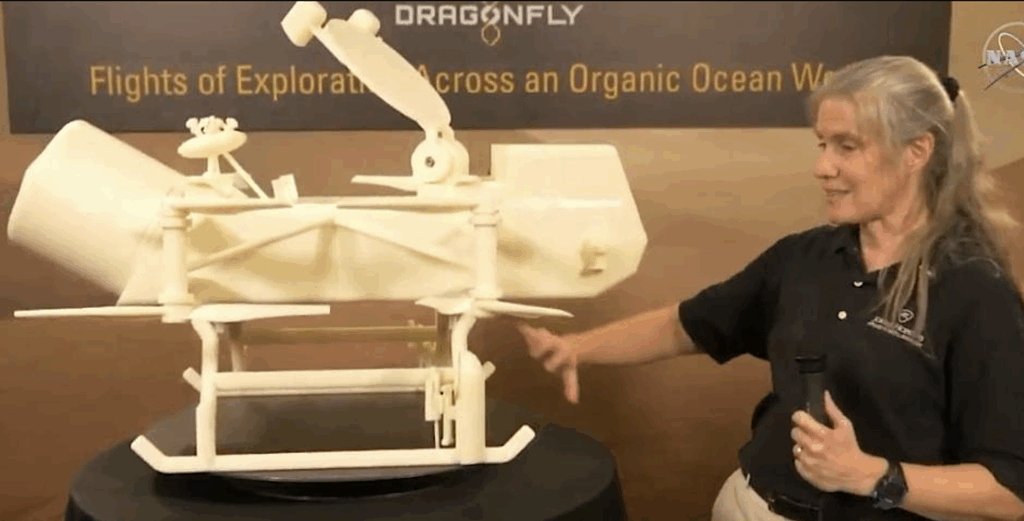
It is December 2034. A spacecraft launched from Earth in July 2028, enters Titan’s atmosphere at 5km/s. Around 2 hours later, it softly lands on the surface at less than 1m /s. Over the next three years, NASA’s Dragonfly mission, a rotorcraft the size of a small car, will chemically analyse the Titan’s atmosphere, ground and a little of its subsurface.
In this interview recorded on 24th April 2025 in Oxford during Breakthrough Discuss, Dr Elizabeth Turtle, Principal Investigator, on the Dragonfly mission to Saturn’s largest mission – Titan.
Some of the topics Dr Turtle covers include
- Dragonfly’s scientific objectives to explore complex organic chemistry and understand the steps that occurred before biology took hold on Earth, helping us learn about our own chemical origins.
- Dragonfly isn’t just landing; it’s designed to fly from place to place. Over its nominal mission lifetime of a little over three years, it expects to visit 30-40 different landing sites.
- Flying on Titan is actually easier than flying on Earth because its atmosphere is four times denser and its gravity is only one-seventh of Earth’s.
- An overview of the Dragonfly – large rotorcraft, technically an X8 octacopter, roughly the size of a small car or the large Mars rovers like Curiosity and Perseverance.
- Dragonfly is powered by an MMRTG, a Multi-Mission Radioisotope Thermoelectric Generator, which provides both the electricity and the crucial heat needed to keep the lander’s interior warm in Titan’s frigid environment.
With a launch set for July 2028 and arrival at Titan in December 2034, Dragonfly promises to reveal the detailed chemistry of this unique world. Launch dates are always susceptible to change. The Cassini-Huygens mission that arrived at Saturn/Titan in 2004 was launched in 1997. Saturn orbits the sun every 30 years. If Dragonfly misses the July 2028 launch window, there may be another thirty-year wait!
Leave a Reply